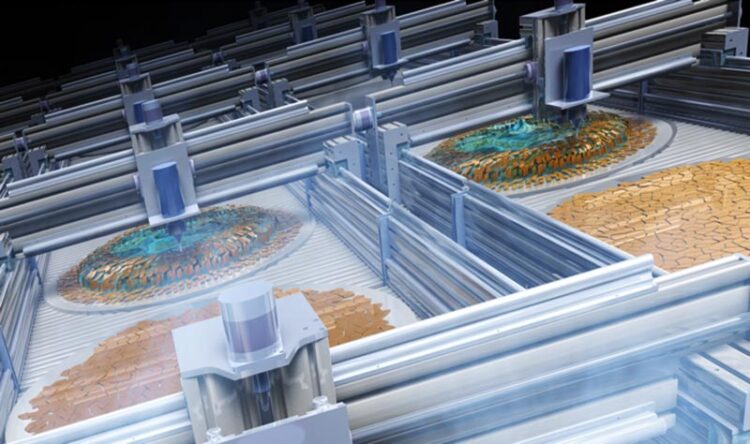High-quality 2D films could be one-drop away

High-quality 2D films could be one-drop away
Credit: Dr Minoru Osada
A research group led by Professor Minoru Osada (he, him) and postdoctoral researcher Yue Shi (she, her) at the Institute for Future Materials and Systems (IMaSS), Nagoya University in Japan, has developed a new technology to fabricate nanosheets, thin films of two-dimensional materials a couple of nanometers thick, in about one minute.
This technology enables the formation of high-quality, large nanosheet films with a single click without the need for specialized knowledge or technology. Their findings are expected to contribute to developing the industrial manufacturing process for various types of nanosheet devices. The study was published in ACS Applied Materials & Interfaces.
Nanosheets have a thickness that is measured in nanometers. Nanometers are so thin that the sheets cannot be seen from the side with the naked eye. They have potential uses in several different fields, including electronics, catalysis, energy storage, and biomedicine. Those made from graphene and inorganic nanosheets are being tested for use in a range of devices, from solar cells to sensors and batteries, because they have electrical, transparency, and heat-resistance functions different from those of conventional bulk materials.
However, the current techniques used to fabricate these thin films, such as the Langmuir-Blodgett method require skilled operation and complex conditions. “Using existing methods, it takes about one hour to fabricate a single layer,” Osada said. “This creates a major bottleneck in nanosheet manufacturing.”
The group aimed to develop a new process that can produce high-quality neatly tiled monolayer films of nanosheets easily and in a short time. They developed an automated film-forming process that produced nanosheets in about a minute with a simple drop of a colloidal aqueous solution onto a substrate heated on a hotplate using an automatic pipette. Afterwards, they followed this with aspiration of the solution and liquid removal. The result was a neatly tiled monolayer film with no gaps between the nanosheets.
“The reduction of the surface tension of the colloidal aqueous solution and the promotion of convection of the nanosheets suppressed the overlap and gaps between the nanosheets and allowed us control over its alignment,” Osada said. “Layer-by-layer construction of multilayer films controlled by the thickness unit of nanosheets was possible by repeating the neatly tiled monolayer film fabrication operation.”
“The newly developed method is expected to become an important technology as an industrial thin-film fabrication method and nano-coating method for nanosheets because it is simple, quick, and requires only a small amount of solution to fabricate a high-quality, large-area film with a neatly tiled alignment,” said Osada. “The technology is based on simple drop and aspiration operations using an automatic pipette and does not require specialized knowledge or technology. This technology is applicable to nanosheets of various compositions and structures, such as oxides, graphene, and boron nitride, and can form films on substrates of various shapes, sizes, and materials, making it an extremely versatile film-forming technology.”
Journal: ACS Applied Materials & Interfaces
DOI: 10.1021/acsami.3c02250
Article Title: Automated One-Drop Assembly for Facile 2D Film Deposition
Media Contact
Matthew Coslett
Nagoya University
kouho-en@adm.nagoya-u.ac.jp
Office: +81 (0)52-747-6862
@NagoyaUniv
All latest news from the category: Materials Sciences
Materials management deals with the research, development, manufacturing and processing of raw and industrial materials. Key aspects here are biological and medical issues, which play an increasingly important role in this field.
innovations-report offers in-depth articles related to the development and application of materials and the structure and properties of new materials.
Newest articles

Largest magnetic anisotropy of a molecule measured at BESSY II
At the Berlin synchrotron radiation source BESSY II, the largest magnetic anisotropy of a single molecule ever measured experimentally has been determined. The larger this anisotropy is, the better a…

Breaking boundaries: Researchers isolate quantum coherence in classical light systems
LSU quantum researchers uncover hidden quantum behaviors within classical light, which could make quantum technologies robust. Understanding the boundary between classical and quantum physics has long been a central question…

MRI-first strategy for prostate cancer detection proves to be safe
Active monitoring is a sufficiently safe option when prostate MRI findings are negative. There are several strategies for the early detection of prostate cancer. The first step is often a…



